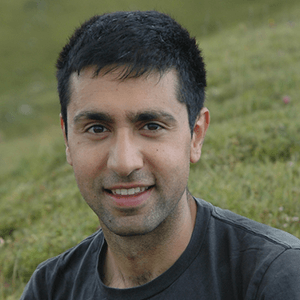
Amir Safavi-Naeini
Assistant Professor, Applied Physics, Stanford University
Platform for Photonic and Phononic Information Processing
It’s possible to efficiently process both quantum and classical information on a single platform by employing both mechanical motion and the efficiency of optics, according to Dr. Amir Safavi-Naeini, Assistant Professor of Applied Physics at Stanford University. At Upgrade 2020, the NTT Research Summit, Safavi-Naeini gave a talk discussing his work-in-progress solution to overcoming limitations encountered with current platforms.
“Our goal is to realize a platform for quantum coherent information processing that enables functionality that currently does not exist in other platforms,” he says.
Such a platform would seek to achieve three primary goals. The first is to foster both low loss and non-linearity that can be dispersion engineered into highly efficient broadband circuits. Second, the circuits within the platform need to be programmable and reconfigurable, which requires effective modulation and switching. Lastly, it must enable large-scale programmable dynamics between many different oscillators on a chip, which can be achieved using advances in superconducting circuits. The findings presented by Safavi-Naeini build the framework for achieving these goals, which he estimates are possible in the next few years.
The material that establishes the low loss and nonlinearity of this platform is lithium niobate (LN), a ferroelectric crystal. Lithium niobate is widely used in optical components because its built-in polarization leads to useful effects – specifically the piezoelectric effect, which garners electric charge in response to a mechanical stressor. Platforms with this material often employ it in bulk, however, which comes with drawbacks.
Safavi-Naeini calls upon work by Guarino et al. in 2007, titled Electro–optically tunable microring resonators in lithium niobate, that shows LN can be bonded and patterned in the form of a thin film, allowing for the implementation of photonic circuits. This led the way to some breakthroughs. In 2017, Zhang et al. established that high quality factors are possible with a platform utilizing LN film, with losses of just a few DB per meter. In 2018, Wang et al. demonstrated that polling is possible. Safavi-Naeini points out that “new types of circuits can be possible in this platform.”
With help from his colleague Martin Fajer and his team of graduate students, Safavi-Naeini experimented with possibilities including efficiently guiding photons in lithium niobate. “The large index contrast means that light is guided in a very highly confined waveguide, which supports bends with small bending radii. That means we can have resonators that are very small,” he said.
Safavi-Naeini notes three important qualities of the platform:
- An enhancement around six orders of magnitude in the interaction length over systems using bulk components on a circuit that’s sub-millimeter in size
- Opportunity for careful design
- Low loss
Mechanical components come into play in switching and modulating the waves. For low frequency interactions, Safavi-Naeini discusses a device that integrates MEMS switching and tuning with the platform. Beams of photons are bent through lithium niobate via a pair of electrodes that carry a current, generating a large displacement in the center of the beams. Switching is thus achieved by bending the beams with just a 50 millivolt change in current. “We can also tune this resonance across the full telecom band,” he says.
For higher frequencies, he uses a device composed of two coupled resonators, one tuned with a DC voltage. The splitting produces two different resonances, and when these are fed with a pump of voltage, unwanted sidebands beyond what’s pumped through the two resonators can be prevented from occurring at all, thus effectively eliminating loss.
“It’s also interesting that these interactions now preserve quantum coherence… this is one path to creating links between superconducting microwave systems and optical ones,” Safavi-Naeini says. Another device uses the acousto-optic effect, which shifts the frequency of light by using sound waves. This device uses a transducer made out of lithium niobate to guide a propagating wave of phonons to a confined space where they interact strongly with the photons. “This strong interaction leads to very efficient, effective electro-optic modulation,” he says.
Cleverly integrating these phononic and photonic circuits offers opportunities for scalability, with the goal to eventually demonstrate reconfigurability on larger scales. Safavi-Naeini also noted prospects for interactions of these devices with superconducting.
For the full transcript of Amir Safavi-Naeini’s presentation, click here.
Watch Amir Safavi-Naeini’s full presentation below.
To view the list of PHI Lab track speakers at the upcoming NTT Research Upgrade 2021 Summit on September 20-21, 2021, click here. To register for the NTT Research Upgrade 2021 Summit, click here.

Platform for Photonic and Phononic Information Processing

Amir Safavi-Naeini,
Assistant Professor, Applied Physics, Stanford University
recent publications by Amir Safavi-Naeini
- Quantum control for inhomogeneous broadening compensation in single-photon transducers
- Building a fault-tolerant quantum computer using concatenated cat codes
- Cryogenic microwave-to-optical conversion using a triply resonant lithium-niobate-on-sapphire transducer
- Gigahertz phononic integrated circuits on thin-film lithium niobate on sapphire
- Amir Safavi-Naeini's Google Scholar page
- Transcript of Amir Safavi-Naeini's presentation

